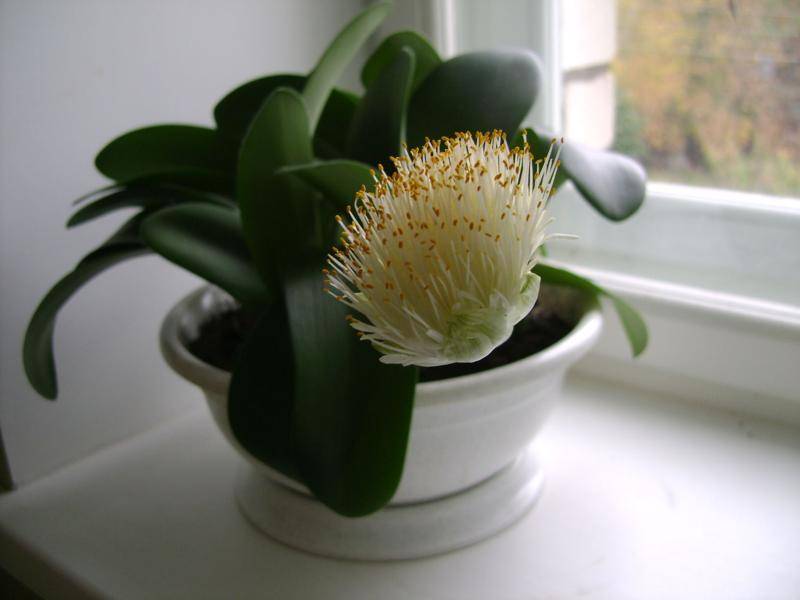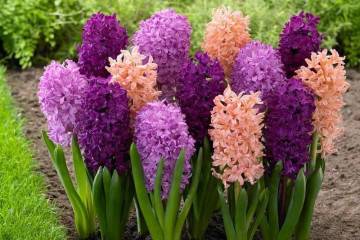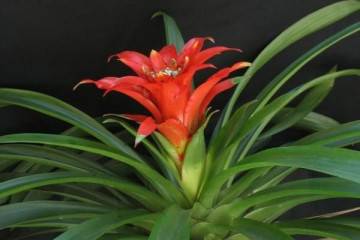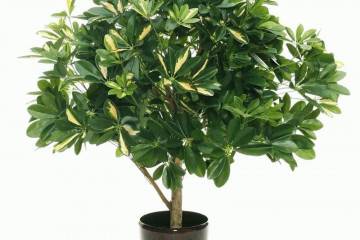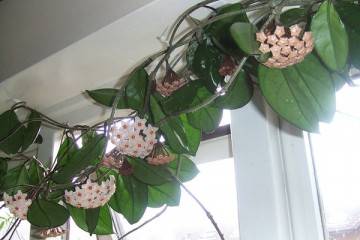Gemantus - home care for a flower
Content:
Gemantus is a flower that was nicknamed by flower growers as the tongue of a deer or the ear of an elephant. But from the Greek language it literally means "bloody flower".
Gemantus - what is this flower
The monocotyledonous plant Hemantus (Haemanthus) belongs to the Amaryllis family. In its natural environment, it grows in South America.
A medium-sized plant usually reaches a height of 50 to 70 cm. The flower bush has many leaf plates in the form of straps with rounded ends, which are painted in a rich green. The surface of the leaves is glossy and smooth, slightly sticky to the touch. Peduncles are long, dense and thick, can reach a length of 20 cm.
Varieties of hemantus
Hemantus flowers are subdivided into more than 45 species, but most often only white-flowered and its hybrid varieties are cultivated.
White-flowered Gemantus (Haemanthus albiflos)
The most common type. It has white fluffy flowers and fleshy leaves with jagged edges. Flowering occurs in the autumn-winter period. On the basis of this species, most of the hybrid varieties of hemantus were bred.
Gemantus Katherinae (Haemanthus Katherinae)
One of the varieties of multi-flowered hemantus has another name - blood lily. Like a lily, Katarina has narrow, long and smooth leaves. The flowers are large, 15-20 cm in diameter. The petals are bright scarlet.
Hemantus Linden (Haemanthus lindenii)
Linden is characterized by long petioles, a two-row arrangement of leaf plates and a high peduncle. Umbrella-shaped inflorescences have a scarlet color, flowers are small, 5 cm in diameter.
Hemantus snow-white (Haemanthus candidus)
This variety is bred by a selection method based on the white-flowered species. It is distinguished by pubescent leaves, which take on this appearance due to the small villi on the lower part. In terms of description and care, it differs little from the white-flowered hemantus.
In addition to the listed species, there are also varieties and varieties that are often grown indoors:
- tiger. Has a pattern on the surface of the sheets in the form of spots, inflorescences of a red hue;
- pomegranate. The sheet plates have waviness at the ends;
- multi-flowered. Flowers pink or red, leaves with noticeable veins.
Hemantus care at home
In order for an ornamental bush to bloom in a timely manner and not get sick, it needs proper and attentive care. It's not enough just to hold events, you need to know the rules and do everything in a timely manner.
Watering and humidity
Caring for the hemantus involves timely and regular watering.It is recommended to water the bush abundantly so that the soil in the pot does not have time to dry out. Closer to winter, watering is gradually reduced so as not to disturb the flower when it leaves for a dormant period.
Hemantus has no special requirements for moisture indicators. The main thing is to keep the humidity in a moderate state and avoid strong drops.
Illumination and temperature conditions
Another secret to proper growing is lightly shaded lighting. Direct sunlight often burns the surface of the delicate, fleshy leaves. Better to put the pot on the western windows of the house.
The temperature shouldn't be too warm either. Ideal values are from 19 ° C to 20 ° C.
Hemantus bloom: seasonal periods
Gemantus begins to bloom towards the end of the summer season. Flowering can continue until winter. The flowers of the plant are collected in racemes. The petals rolled into a tube are painted in white, red, pink colors.
What to do if it does not bloom
Often there are problems in which the hemantus does not bloom, what to do in this case? The reason why he does not dissolve the buds may be improper care or a feature of the development of the flower itself. It is necessary to monitor the quality of the irrigation water, it should not be hard and cold. Also, the lack of flowering is affected by the low temperature of the content and the lack of natural light.
Reproduction methods
The plant is propagated by seeds, babies and leafy cuttings.
Reproduction by children
Several children are separated from a healthy bush more than three years old. Each must have its own roots, otherwise the children will not take root. You can immediately plant them in separate pots, or you can first grow them in a box before strengthening and rooting. The bushes begin to bloom in the 3rd year of life.
Propagation by leaf cuttings
Reproduction by leaf cuttings is a complex process. To do this, a leaf is cut off from the main bush, which must be strong and sturdy. The cut is treated with activated carbon. The cuttings are carefully planted in the substrate. Watering should be done regularly, every 4 days.
Growing from seeds
The seeds are planted in a box with an earthen mixture, which is moistened in advance. The container is covered with foil or glass and placed in a warm place. Water it periodically.
Plant transplant
Gemantus does not respond well to transplants. However, replanting the bush is necessary every 4 years in early spring or February. The planting pot should be 3 cm larger in diameter than the bulb. An earthen mixture is prepared from turf, peat, river sand and humus. A drainage layer is laid on the bottom of the container.
Problems when growing hemantus
Even with constant home care, white-flowered hemantus and its other species can face various kinds of problems. This means that mistakes were made in the care, the plant got sick or pests appeared.
Rot may appear on the flower bulbs, which is the result of flooding the bush or watering it with cold water. Very rarely, the bush gets sick with red rot when red-orange spots appear on the surface of the leaves. It is better to cut off such sheets immediately.
Of the pests on the flower, spider mites often start, which cover the stems with thin cobwebs. The plant begins to wilt, dark spots appear on it. It is necessary to destroy parasites with the help of special preparations of insecticides or washing the bush under a warm shower with soapy water.
An unusual and exotic plant, Hemantus, for which home care has its own nuances, will thank you with its unusual flowering. But for this it is worthwhile to arm yourself with the knowledge for growing this unusual representative of the domestic flora.

